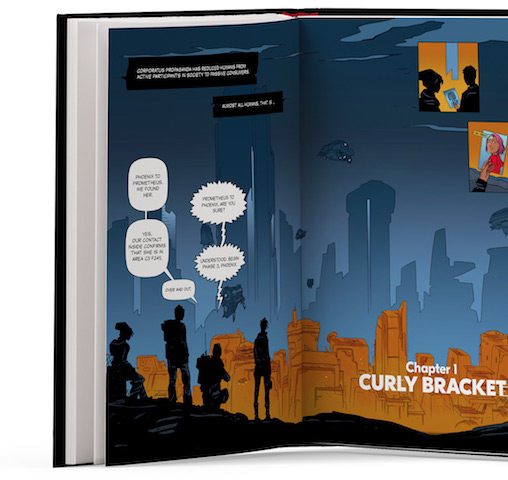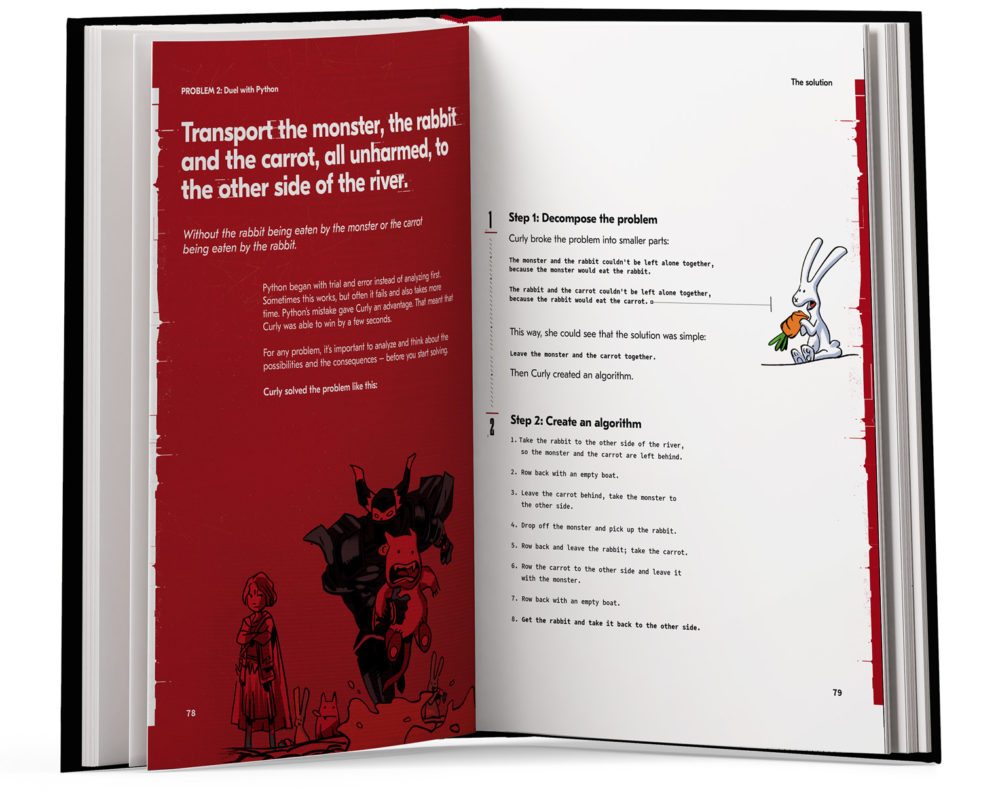For the last few summers, I’ve taught a Beginning Game Programming camp to over 80 kids (and I’ve got four more scheduled this summer). During this five-day camp, the kids are introduced to Scratch and basic programming concepts such as variables, condition statements, and more. I’m quite fond of the DK workbooks because they all start from the beginning—they introduce the Scratch user-interface, explain the basics of using the tool, and then provide a number of hands-on projects that get the kids immediately creating fun little games that they can share with friends and family.
By the end of the camps, I’ve always identified a handful of campers who show a knack for coding. Inevitably, a few of them begin asking for more training. I have a list of books that I provide them and their parents, and that list includes more Scratch books plus some text-based programming books for Python. I love to see campers leaving the camp with the basics under their belt, and my hope is that they’ll continue to self-learn at home.
Over the years, I’ve found a number of books that also focus on programming theory, but I’ve yet to find one that I believe is suitable for a younger audience. I’m not a professional coder, but I’ve taken my fair share of programming classes over the year, and I know that many coders have a unique way of examining a problem and tearing it down before putting fingers on a keyboard. What I’ve been wanting is a book that I could recommend to the campers that will help them to start thinking like a coder… and now I’ve got one.
 Curly Bracket: The Hidden Code is the first book in a new graphic novel series created by Johan Wendt, Tor Moström, and Peter Bergting. This 100-page hardback tells the story of Curly Bracket, a young lady in the near future who lives in a world controlled by Corporatus. Curly is just one of thousands of kids who are raised and trained to be useful to Corporatus. A final exam is given before the fates of the kids is decided; pass and you might be lucky enough to have a comfortable life in the employee of Corporatus… fail and you’ll be sent down to spend your life at a less-than-menial job.
Curly Bracket: The Hidden Code is the first book in a new graphic novel series created by Johan Wendt, Tor Moström, and Peter Bergting. This 100-page hardback tells the story of Curly Bracket, a young lady in the near future who lives in a world controlled by Corporatus. Curly is just one of thousands of kids who are raised and trained to be useful to Corporatus. A final exam is given before the fates of the kids is decided; pass and you might be lucky enough to have a comfortable life in the employee of Corporatus… fail and you’ll be sent down to spend your life at a less-than-menial job.
Curly is quite gifted, and she’s been identified by a shadowy group that appears to be at odds with Corporatus. During Curly’s final exam, a virtual reality experience where she is given three special tasks to perform that test her creativity and problem solving, her test is interrupted and she is given one chance to escape from Corporatus and learn… The Truth.

Curly chooses to learn The Truth, and this puts her at odds with Corporatus. She finds herself on the run in the maze-like sewer system beneath the city, solving a number of problems to find the solution through the maze… and ultimately finds a group that needs her help to fight Corporatus.
Will kids love this story? Absolutely! You don’t even need to have an interest in programming/coding to enjoy the story. The excitement and intrigue are sure to grab any reader, and the artwork is eye-catching and fits with the mood of the story. But that’s not what I love most about the book…
The last 30 pages of the book is called Problems & Solutions. Here, readers can examine the nine puzzles/problems that Curly encountered during her run from Corporatus. Each problem is dissected and examined through a series of steps that show how one might use logical thinking and coding to solve the problem. The problems are a perfect match for the concepts the book’s creators wish to teach — recognizing patterns, designing an algorithm, etc. The creators have also provided an incredible little tutorial on Computational Thinking and explain 10 different techniques that are important to coders: Abstraction, Algorithm, Automation, Data Analysis, Data Collection, Data Representation, Pattern Generalization, Pattern Recognition, Decomposition, and Parallelization. If this list sounds a bit overwhelming to you, don’t worry… the nine problems explain all this in simple terms that a young reader can follow and the explanations also are paired to the right type of problem. The amount of actual “code” in the solution pages is minimal, and readers don’t need to be fluent in any particular programming language or tool.

I cannot wait to see where the next book takes Curly — Book 2 is titled Curly Bracket: Corporatus Secret, and I have no doubt it will be useful to my young campers. If the creators can continue to keep the book focused on thinking like a coder without the reader needing to know an actual programming language, this series will be a valuable tool for coding instructors of all ages.
Note: I was provided a review copy of the book. You can find more information on the book’s official webpage.





The book says it is for ages 8-13. Do you think a 7 year old with no coding experience would enjoy it? Would it be confusing? I’d love to get her interested in coding!
Hard to say, Tim… but maybe you could read it with her and go over the puzzles together? I don’t know how they get the age recommendation, but I have met kids age 6 and 7 who were programming LEGO robots. I think it’s all about interest level and providing assistance.